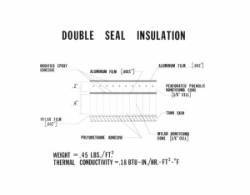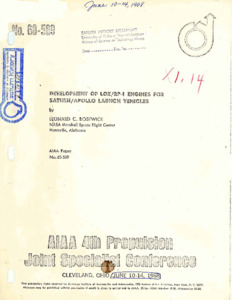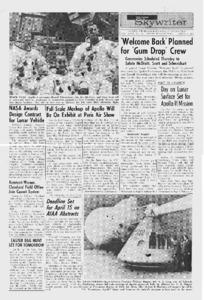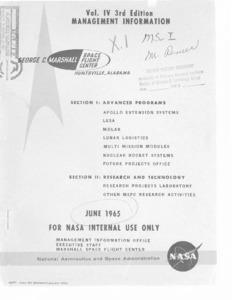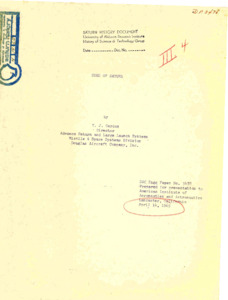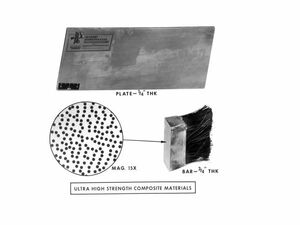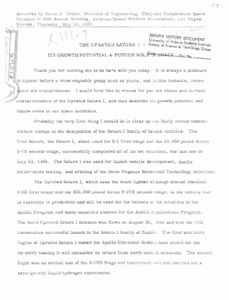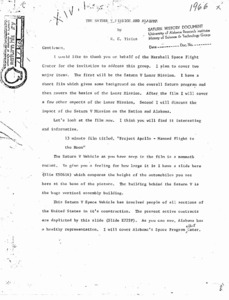
Browse Items (156 total)
Sort by:
-
Double seal insulation [drawing] photograph.
8 x 10 inch black and white photograph.; Drawing contains information about the modified epoxy adhesive, aluminum film, mylar film, perforated phenolic honeycomb core, tank skin, mylar honeycomb core, polyurethane adhesive, weight and thermal conductivity.; Photo negative no. 651746 M-268. -
Development of LOX/RP-1 engines for Saturn/Apollo launch vehicles.
The development of liquid rocket engines follow similar patterns regardless of engine size. During the development of the H-1 and F-1 engines, may problems were encountered. Mehtods of solving the combustion instability problem are discussed.; AIAA 4th Propulsion Joint Specialist Conference, Cleveland, Ohio, June 10-14, 1968.; Also available on NASA Technical Reports Server (NTRS) as unclassified. Can be ordered. Also on AIAA. -
"Welcome back planned for 'Gum drop' crew."
News article detailing the planned 'Welcome back' events surrounding the resturn of the Apollo 9 crew. -
"Vol. IV 3rd edition Management Information."
This document contains copies of management charts and photographs maintained in the Management Information Office of the Executive Staff on Advanced Program and Research and Technology Areas. -
"Uses of Saturn."
Saturn and Apollo hardware will not have realized their ultimate potential for space exploration after the project lunar landing is complete. To accomplish the Apollo lunar landing program, an immense backlog of technology, facilities, and booster capability will have been built up, and we believe proper utilization of this resource will fill the needs for planetary, lunar and earth orbital space exploration for years to come. -
"Ultra high strength composite materials."
8 x 10 inch black and white photograph which displays an image that includes the plate, bar and the magnification of the bar to display its molecules. -
"The uprated Saturn I - its growth potential & future role in space."
Remarks by Vaino J. Vehko, Director of Engineering, Chrysler Corporation Space Division at 30th Annual Meeting, Aviation/Space Writers Association, Las Vegas, Nevada -
"The TV system for the Apollo telescope mount."
Focuses on the construction and future use of the Apollo space telescope. The components described in this paper except for those listed otherwise were designed by the Space Support Division of Sperry Rand Corporation to specifications established by NASA's Marshall Space Flight Center in Huntsville, Alabama. Appreciation is extended to MSFC for permission to publish this paper and for data and help provided for its preparation. -
"The significance of parameters affecting the heat transfer to the liquid hydrogen in the Saturn S-IVB stage for the lunar orbit rendezvous mission."
The Saturn S-IVB stage has a requirement for orbiting around the earth for up to 4.5 hours with approximately 60 percent of its initial propellant remaining at the end of the coast (prior to restart) . Extensive analyses must be performed to insure that this requirement is met. Both the maximum and minimum heat transfer rates are important because the maximum rates affect the hydrogen boiloff losses and thus the initial propellant loading requirements. The minimum rates are important because the boil off gases are used to maintain a minimum axial thrust level by venting the gases continuously through aft facing nozzles. This provides for a settling of the propellant throughout the orbital coast and alleviates the need for periodically venting the tank under zero gravity. -
"The Saturn V mission and Alabama."
Speech that covers the topics of the Saturn V lunar mission and the basics of a lunar mission in general.
